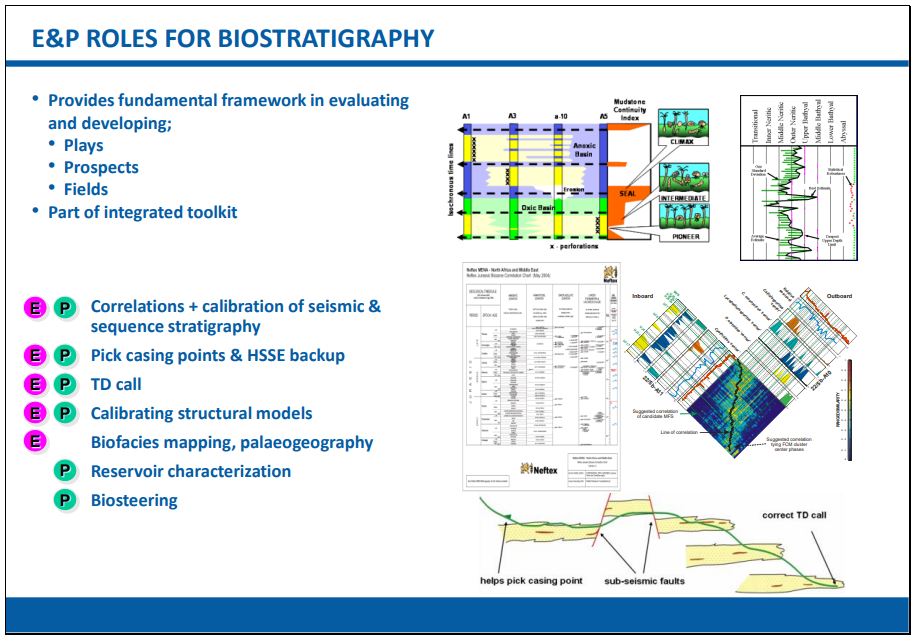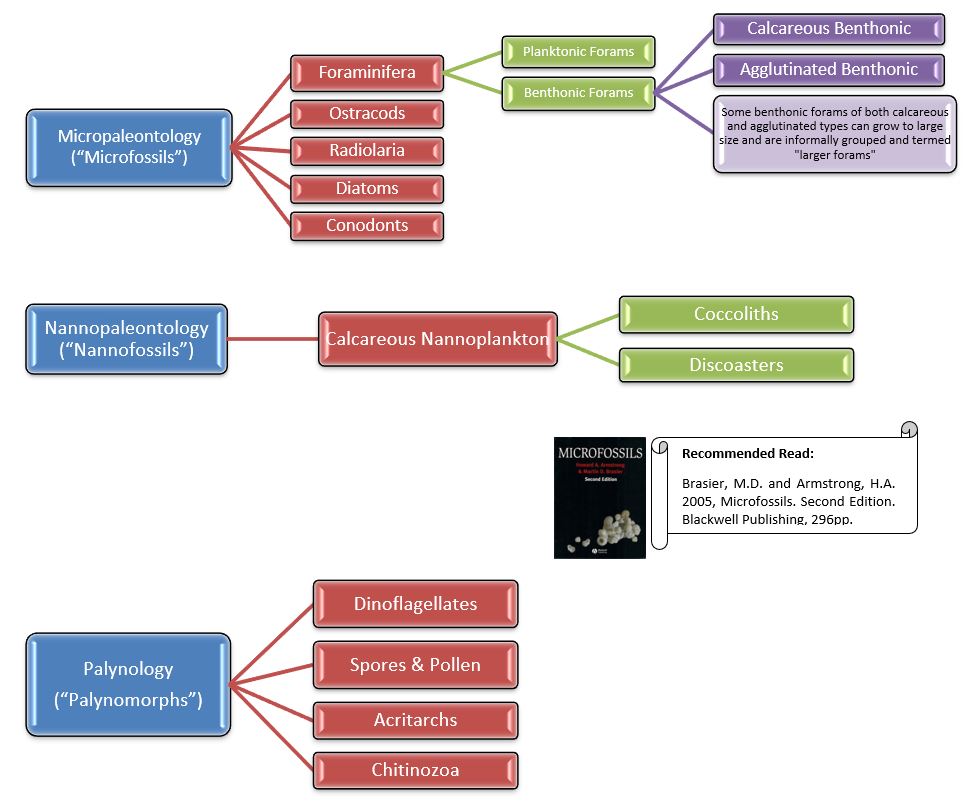Table of Contents
Setting the Scene
What is Applied Biostratigraphy?
This is biostratigraphy as it is employed not only to help find and produce hydrocarbons, but also the role it plays and will play throughout the Energy Transition. Current uses for CCUS, wind-farm siting, aquifer prediction and mapping etc., although relatively minor at present, will certainly expand many-fold and the principles learned during the past century in the hydrocarbons industry are as equally applicable to the Energy Transition.

Although the science of biostratigraphy can and does reply on the use of fossils, which of course come in all shapes in sizes, in Applied Biostratigraphy the principal tools of the trade are the microfossils. These will be discussed in more detail in the next section, but they are introduced here, together with a discussion on how they are studied, who studies them, how they are obtained from the rocks and how biostratigraphers analyse and record microfossil data.
 The main microfossil groups and subgroups - the principle “tools of the trade”. The main method of differentiation between the three main groups is largely based on microfossil size and on the methods used for processing the rocks to release the micro-organisms within them.
[Note: the terms “planktonic” and “benthonic” and their contractions “planktic” and “benthic” are interchangeable but we have preferred the use of the former pair]
The main microfossil groups and subgroups - the principle “tools of the trade”. The main method of differentiation between the three main groups is largely based on microfossil size and on the methods used for processing the rocks to release the micro-organisms within them.
[Note: the terms “planktonic” and “benthonic” and their contractions “planktic” and “benthic” are interchangeable but we have preferred the use of the former pair]
